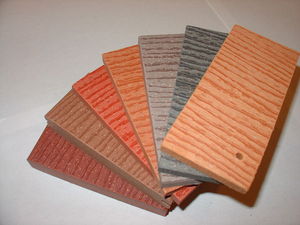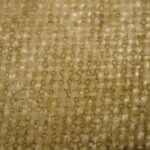Plastic lumber is starting to command shelf space at local big-box home improvement stores. As the smell of fresh-cut pine decreases, the amount of recycled plastic wood increases; is it a workable material for the do-it-yourselfer?
Types of Plastic Wood
In California(1), recycled plastic lumber is a mix of building materials and reclaimed plastic that is melted down. High density polyethylene plastic lumber is made of the same material as milk jugs; it is available in a rainbow of colors. Wood-filled plastic lumber is a mix of plastic and sawdust; another kind of artificial wood combines plastic and fiberglass.
Advantages and Disadvantages of Plastic Lumber
Polyethylene recycled plastic lumber is a colorful deck material. On the downside, it does not have the same firmness as wood boards, which may present a problem when storing heavy items on a deck for prolonged periods of time.
The mix of plastic and wood is easily paintable but due to the sawdust it is subject to insect attacks. In addition, there is a good chance that it absorbs moisture and shatters more easily than real wood.
When fiberglass is mixed with plastic lumber, it increases the stiffness of the material, which places it on par with wooden support beams. On the downside, the fiberglass is a strong skin irritant.
Is Recycled Plastic Lumber the Right Choice?
At this point, the material is widely offered for deck building but also for playground structures and park benches. With the exception of the wood and plastic mix, other variations do not fall victim to insect attacks, eliminate the need of toxic sealants and resist moisture damage. Best of all, graffiti does not stick. That being said, plastic lumber prices are higher than regular wood lumber.
For example, structural grade plastic lumber – as sold by the Plastic Lumberyard(2) – costs $2.99 for a foot of black 2×4; white or yellow costs $4, while all other colors run $3.66 per foot. When compared to a 2×4 of Douglas fir wood from Lowe’s, the cost (in California) is $2.32 for eight feet.
Another factor that might have the homeowner hesitate to look to plastic lumber is the still evolving system of material testing standards. As outlined by the Plastic Lumber Trade Association(3) in 2007, “A number of ASTM standards that pertain to quality and testing of plastic lumber that were modified or in ballot were completed during the last four-to-six-year review process.” In spite of this development, just a year earlier investment writer James Altucher(4) applied the equation “no standards = no insurance — builders would be nuts to use it.”
Obviously the plastic lumber industry has come a long way since then, but the homeowner intending to use recycled plastic lumber should run the idea past the local building department and also homeowner’s insurance company, just to make sure that there are no caveats.
Sources
(1)California Department of Resources Recycling and Recovery. “Recycled Plastic Lumber” (accessed March 6, 2010)
(2)Plastic Lumberyard. “Structural grade plastic lumber price sheet” (accessed March 6, 2010)
(3)Plastic Lumber Trade Association. “2007 State of the Recycled Plastic Lumber Industry” (accessed March 6, 2010)
(4)James Altucher. “Plastic Lumber Doesn’t Stack Up” (accessed March 6, 2010)




